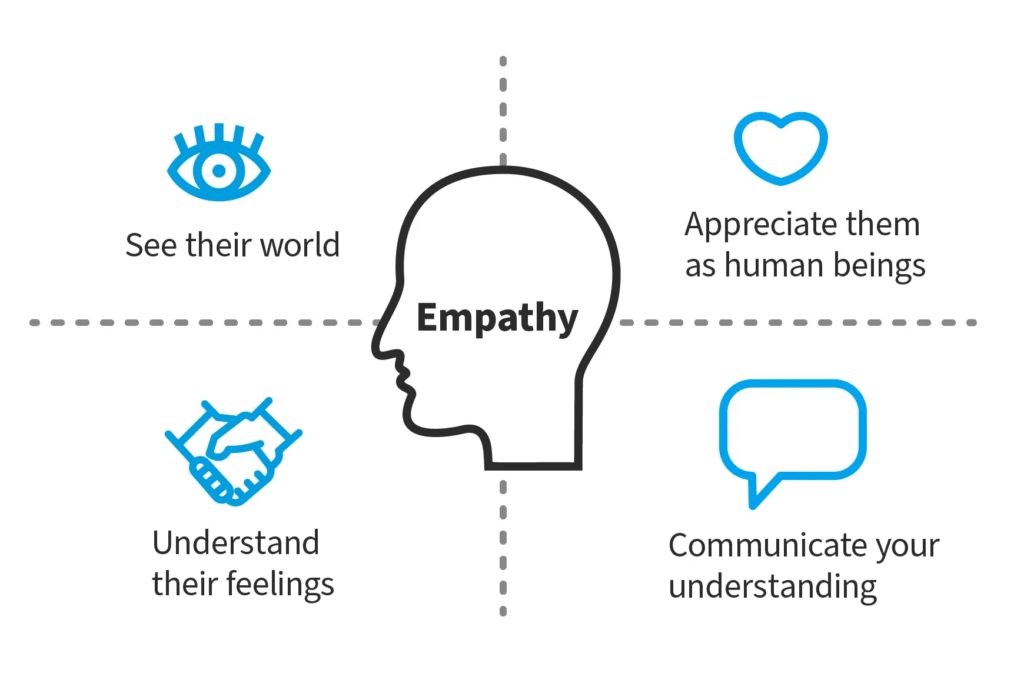✨ New article: Psychology of UX Writing.
Empathize is the first stage of the design thinking process. Design teams research to get a personal grasp of their users’ needs. They set aside assumptions to obtain insights into the users’ world by observing and consulting with users. This lets them understand users’ experiences, motivations, and problems.
Empathize is design thinking’s first stage for a reason. It’s the first step to thoughtfully designed products that prove the designers built with a compassionate eye for their users. Empathy is a naturally occurring characteristic that people have in varying degrees. However, they can improve their ability to empathize as a soft skill.
Anyone in a design team will have preconceived ideas about the many situations people find themselves in as users. It’s unavoidable – you can’t unlearn your life experience. Therefore, you should always adopt a beginner’s mindset to be able to view and analyze situations with users objectively.

To empathize is to research. So, you should constantly remind yourself to question everything you observe instead of judging. You should also listen to others open-mindedly rather than focus on points that confirm your biases. Because our biases will naturally creep into how we view the world and the situations we consider, as designers—or design thinkers—we must catch and overcome these before they distort our research.
You must become entirely objective before you can see through your users’ eyes and interpret their viewpoints optimally. They are the experts. You must understand the users’ dimensions of use (e.g., tasks) and their feelings (e.g., motivations) before you can work towards delighting them through your design.
Resources
↗ Design Thinking: The Ultimate Guide
↗ Empathy Mapping: The First Step in Design Thinking
↗ When to Use Empathy Maps: 3 Options

